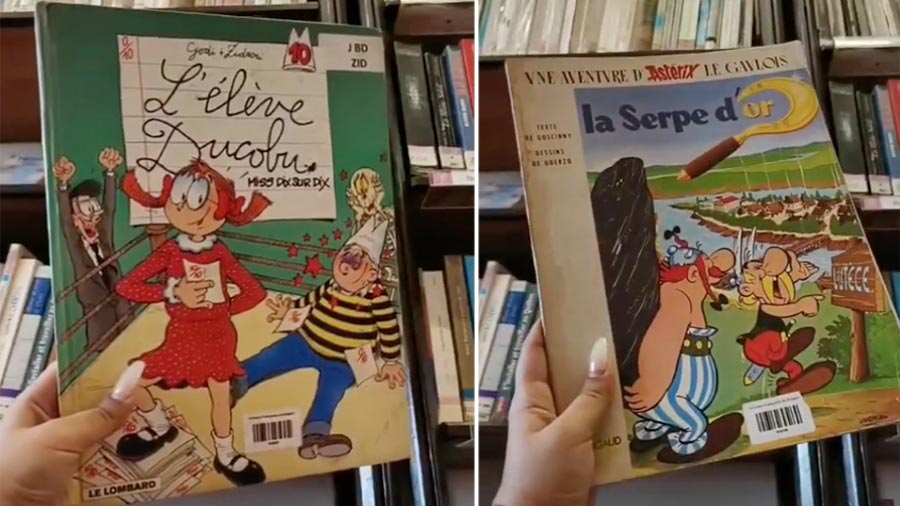Studying science! Interested in writing! Have communication skills! Why not take up science communication as a profession?
It is not mandatory that everyone has to take up the profession of scientists, doctors or engineers. It is time that science graduates start thinking of taking up science journalism as a profession. It starts with part-time activities of writing and communicating science to people and ends up by engaging oneself full time in this activity.
A formal training in science communication is not very essential. Some degree in any science related fields with some background of journalism or communication is very much helpful in this endeavor. One also gets additional advantage in this field, if he or she is involved in outreach programmes. The main factor is the urge to communicate, which slowly and steadily engulfs one and persuades him/her to take up science communication as a career.
The question arises why do we need science communicators? It is seen that scientists go on writing papers on their research findings. However, the details published in that paper are too technical for a common man to understand. Very few scientists write about their research work in a layman’s terms. Hence, the need arises for someone to communicate the technical papers into simple writings for common people to understand. It also needs to be translated into regional languages for spreading among the masses. This work can only be done in a satisfactory manner by science communicators.
A country can only survive if it becomes scientifically enriched. Scientific temper is essential to fight against superstition and false beliefs. The role of science communicators is to introduce scientific temper into the mass and create social awareness against superstition. In any pandemic or disaster like situation, the general public is always at a loss, not understanding what to do and how to proceed.
At the same time many scientific research data comes into focus through the media. People do not always understand what is right for them, as political interventions and advertisements through different media mislead them. They all start searching for a guide who will show them the right path and contradict the fake news.
It is only science communicators who can fight this, by means of logic and rational argumentation and make the mass aware of the truth through interview of well known scientists, communicating news from authentic institutes and elaborating the science behind the findings with help of researchers, who should also assist the science communicators by passing on their knowledge to a greater extent.
The tools of science communicators are varied from traditional to electronic media. Besides radio, television, newspapers, magazines, puppetry, drama, songs, films, the modern social media is presently taking up a lot of space in science journalism. The use of WhatsApp, blogging, Twitter, Facebook, e- journals, websites, etc. are becoming popular day by day.
In a single moment, lakhs of people in different parts of the world can be reached. The news, whether they are genuine or false, reaches the majority of the population instantly. The need for correct science reporting is very much essential to update people with the latest developments and to create a scientific temper in the society.
Interestingly, it is not only the science graduates who communicate science to the people and write in different media. Veteran journalists without a science background also communicate science after studying the subject in depth. Hence, the question still remains whether persons without any science background can also become science communicators!
The matter actually depends on the individual and on how much scientific temper has been cultivated in him or her. Persons without actual science degrees but with real scientific temper can definitely progress in this area. However, due care needs to be taken by them while preparing the scientific content of the presentation.
The question arises regarding the recruitments or assignments of persons persuading science communication as a career. Very few jobs are advertised directly seeking persons for filling up a post of “science communicator”. Science communicators are sometimes hired as science writers, communication associates, social media coordinators, outreach managers, etc. Some organizations or institutions engaged in science and research like universities, non-profits, research centers, governmental agencies may recruit science communicators. The National Council of Science Museum offers a MTech Course in Science Communication and offers various posts where science communicators can apply.
There are very few journals entirely dedicated to science communication. Presently, the media, especially radio, television, print media are reluctant to hire science communicators as very little time and space is allotted to science. It is understood by them that common people are not interested in scientific facts, news and write-ups as they are dull and boring.
However, it’s not the entire fault of the media or the general public for disliking science as it is really the discredit of the scientist or the science communicator, who cannot make his or her presentation attractive. A scientific presentation can also draw a large number of audience, particularly children, if presented in an attractive way. Here lies the challenge to science communicators. Once the media gets convinced that there is a need for some scientific programme or write-ups under their platform, the demand for hiring science communicators will definitely increase.
To find a job in the field of science communication, some experience in social media, public interfacing, creativity, writing skills, outreach programmes are added advantages. Your contribution during your school and college years through science clubs, magazines, student newspapers, creating your own website or audio, video documents, participation in science dramas, debates also counts, as it forms the background of one's career as a science communicator.
However little you have contributed in this area in your childhood does not really matter as it reflects the creativity, enthusiasm and scientific temper of the person. Every bit of science that is needed to be communicated to the people can be done so in different ways, which are unique in their own style. Hence, the pathways for science communication are not restricted and have no definite template. It varies from audience to audience and it is the creativity of the communicator how he or she approaches the audience.
Many eminent personalities, who started as science freelancers in their early life, have finally become full time science communicators. The demand for science journalists is slowly increasing and as there are very few people really dedicated to this field, the quota can be filled up easily. However, full time engagement of science communicators is still yet to really mature but likely to do so in the near future.
Government has slowly become aware of the role of science communicators and has started several schemes and projects for them. Provision has been made in different agencies, NGOs and institutes (names) to hire persons with good science communication skills. DST, DBT, ICMR, DRDO, CSIR, have started some fellowship for science writers, particularly ladies, who could sit in their house and communicate.
National Council for Science and Technology Communication (NCSTC), DST was established to integrate, coordinate, catalyse and support science communication and popularisation, at the micro as well as macro level. The National Institute of Science Communication (NISCOM), CSIR have been publishing popular science journals and books.
The present government is encouraging children to submit their scientific ideas and write-ups for further pursuit. To further strengthen this, Dr Harsh Vardhan, Hon’ble Union Minister for Science & Technology & Earth Sciences launched the AWSAR (Augmenting Writing Skills for Articulating Research) programme along with other new programs of DST in a ceremony held on January 24, 2018 at CSIR. AWSAR has been initiated to encourage, empower and endow popular science writing through newspapers, magazines, blogs, social media, etc. by young PhD Scholars and Post-Doctoral Fellows during the course of their higher studies and research pursuits.
The India Science Media Fellowships 2019 is a joint venture of the Wellcome Trust/DBT India Alliance (India Alliance) and Nature India to encourage coverage of science in the Indian media. Vigyan Prasar, Govt of India also organizes a short training programme with Indian Science News Association, Kolkata and involves science communicators to develop and disseminate software materials and organise popular science events throughout the country. Several NGOs also organise science communication programmes.
The Indian Science Writers' Association (ISWA), for example, undertakes training courses, lectures and fellowships with other government agencies in promoting science communication activities.
Some scientific journals and e-journals are hiring science writers to provide current science news to the public in a popular way. TDU – Nature India Media Fellowship in Science Journalism has also been started by the University of Trans-disciplinary Health Sciences and Technology and Nature India to support journalists to report outstanding stories from the world of science.
Some well-known scientific journals including Science, Nature, New Scientist, Scientific American, Down to Earth, have dedicated science writers with them. Current Science journal has instituted S. Ramaseshan Science Writing Fellowships/Internships for postgraduates in biosciences, literature, journalism or mass communication, who are not engaged anywhere. Some also provide fellowship for writing and collecting news (names).
Print media is slowly becoming aware of the necessity to create scientific temper and is now providing space for some science matters in their paper. Science based films and books including science friction are slowly becoming popular. Hence, the future prospects of science communication as a career look to be promising. However, more young minds need to be attracted to this area and more courses on science journalism to be developed in different universities and colleges to create dedicated science communicators in near future.
The writer is Advisor, Indian Science Congress Association at Kolkata (under Department of Science & Technology, Govt of India) after serving as Executive Secretary for 27 years . He is also a Fellow of several Academies and has more than 60 International publications and 20 Books. For the last 10 years Dr De has also been conducting a Training Programme on Science Journalism and Mass Communication organised by Indian Science News Association and Vigyan Prasar, DST. He has an M.Sc in Biochemistry and Ph.D from Calcutta University.










